Ijraset Journal For Research in Applied Science and Engineering Technology
- Home / Ijraset
- On This Page
- Abstract
- Introduction
- Conclusion
- References
- Copyright
AI in Soil Health Monitoring: A Data-Driven Approach
Authors: Sunit Jana, Deepshikha Chatterjee, Nikita Pal, Koushik Pal, Kaushik Roy, Surajit Basak
DOI Link: https://doi.org/10.22214/ijraset.2024.64871
Certificate: View Certificate
Abstract
The sustainability of ecosystems and agricultural productivity depend on healthy soil. However, conventional techniques for evaluating soil health are sometimes time-consuming, labor-intensive, and restricted in their geographic reach. New opportunities for scalable, real-time soil health monitoring have been made possible by recent developments in artificial intelligence (AI) and data-driven methodologies. This study examines a thorough AI-powered system for tracking soil health, emphasizing methods for data collection, processing, and predictive modeling. AI models can provide precise forecasts of soil characteristics, health indicators, and possible crop yields by combining data from multiple sources, such as remote sensing, soil sensors, and historical data. This study offers a comprehensive analysis of recent AI applications in soil health monitoring and suggests a reliable, scalable approach intended to incorporate diverse data sources, guaranteeing precise and effective soil health assessment.
Introduction
I. INTRODUCTION
Crop production, quality, and ecosystem sustainability are all directly impacted by soil health, which is a key factor in determining agricultural productivity. For food security and environmental resilience, healthy soil is crucial because it promotes plant growth, water filtering, biodiversity, and carbon storage. Key characteristics like pH, moisture, nutrient levels, and organic matter content are measured using conventional techniques of evaluating soil health, such as laboratory testing and manual field inspections. These techniques do have some serious drawbacks, though, as they are frequently expensive, time-consuming, and limited to small regions, producing data that may not be representative of the soil conditions found in the larger region. Furthermore, the reliability and timing of soil health data may be impacted by these approaches' customary reliance on periodic sampling, which may overlook seasonal or abrupt changes in soil quality.
As artificial intelligence (AI) develops, new possibilities for effective, scalable, and real-time soil health monitoring are opening up. Many areas of agriculture have changed as a result of AI approaches, especially in machine learning (ML) and deep learning (DL), which offer automation, high precision, and predictive capabilities. In order to provide thorough insights into soil conditions, artificial intelligence (AI) models can process and evaluate vast, complex datasets collected from a variety of sources, including historical climate records, remote sensing imagery from satellites or drones, and in-field soil sensors. Based on sensor data and environmental factors, machine learning models—such as regression, classification, and clustering—are used to forecast soil properties including moisture content, nutrient levels, and acidity. Convolutional Neural Networks (CNNs), one type of deep learning technique, are very useful for analyzing while Recurrent Neural Networks (RNNs) or Long Short-Term Memory (LSTM) models can assess temporal data to track seasonal changes in soil health, remote sensing photos can be used to determine soil texture, composition, and abnormalities.
Because AI solutions are scalable, data from several sources may be combined to create coherent and useful insights, facilitating more accurate and efficient soil health examinations over wider areas. AI models provide a comprehensive picture of soil quality by combining data from several sources, including temperature, pH, moisture, organic content, and even real-time sensor inputs. Additionally, by examining past data patterns in connection to environmental factors, AI's predictive skills assist in modeling future soil conditions, supporting proactive decision-making by farmers and agricultural management. This paper's main objectives are to analyze current AI-based methods for monitoring soil health, offer a scalable and data-driven framework for combining soil health indicators, and assess the precision and dependability of several prediction models.
By fulfilling these goals, the study hopes to further the creation of AI-powered soil monitoring systems that support sustainable farming, improve resource management, and tackle the escalating issues of environmental preservation and food security.
II. LITERATURE REVIEW
A. Traditional Soil Health Assessment Methods
In order to analyze important soil characteristics including pH, moisture, nutrient levels, organic matter, and microbial content, traditional techniques of soil health evaluation involve physical sampling and laboratory analysis. Usually, soil samples are taken by hand, which calls for a lot of work and skill. Following collection, samples are subjected to laboratory studies, where a range of tests can offer comprehensive insights into the chemical makeup, biological activity, and structure of the soil. In agricultural and environmental investigations, these techniques are generally trusted and provide excellent accuracy for localized assessments. However, a number of drawbacks significantly diminish their efficacy. Because laboratory analyses are expensive, time-consuming, and need specialist equipment, they are not practical for frequent or comprehensive evaluations.
Furthermore, because they only offer information for particular sampling locations and frequently overlook spatial differences across wider fields or areas, traditional sampling techniques are intrinsically localized. Soil parameters are also impacted by seasonal variability, which makes it challenging for static sampling to record dynamic changes over time. Alternative techniques that can offer prompt, extensive, and effective soil health monitoring are therefore required because traditional soil health evaluation is not scalable or real-time.
B. AI and Soil Health Monitoring
By automating data analysis and producing precise, extensive predictions of soil parameters, artificial intelligence (AI) holds revolutionary promise for soil health monitoring. Using input data from soil samples and ambient circumstances, machine learning models like regression and decision trees have been successfully used to predict continuous soil variables like pH, moisture, and nutrient levels. Decision trees assist in identifying trends in soil health data to categorize soil types or detect possible problems, while regression models, for instance, can forecast soil nutrient concentrations using a variety of soil and climatic variables. Advanced neural networks, especially deep learning models, improve the prediction of soil health. Convolutional neural networks, or CNNs, are highly effective at analyzing satellite imagery and other geographical data to find characteristics like the distribution of organic content and soil texture. Because they can handle temporal data, Long Short-Term Memory (LSTM) models—a sort of recurrent neural network—are especially useful in soil health monitoring. They can examine time series data from soil sensors to track trends of soil degradation and seasonal variations. Several algorithms are combined in ensemble approaches, such as Random Forest and Gradient Boosting, to improve forecast accuracy and manage intricate, nonlinear interactions between soil properties. Compared to conventional techniques, AI's flexibility and predictive powers provide soil health evaluations that are significantly more scalable, dynamic, and actionable.

Fig.1. AI and Soil Health Monitoring
C. Remote Sensing and IoT in Soil Data Collection
Remote sensing and the Internet of Things (IoT) are increasingly essential in modern soil data collection, supplying vast amounts of spatial and temporal information crucial for AI-driven soil health monitoring. Satellite-based remote sensing, extensively used in agriculture, provides multispectral and hyperspectral imagery that reveals soil attributes such as moisture, texture, organic matter, and mineral composition. Hyperspectral imagery, in particular, can detect nuanced differences in soil makeup that are often missed by conventional methods, allowing for detailed soil condition mapping across extensive areas. Additionally, drones equipped with high-resolution cameras and specialized sensors offer localized, focused data, which enables targeted soil health assessments within specific fields.
IoT devices, like embedded soil sensors, continuously monitor critical parameters, including pH, temperature, and moisture, often at multiple soil depths. This constant data stream captures real-time changes in soil health metrics, influenced by environmental factors and farming practices. The fusion of data from remote sensing and IoT enables a dynamic, comprehensive approach to soil health monitoring, delivering high-resolution, timely data that enhances AI models for accurate, large-scale soil assessments and predictive management, thereby supporting optimal agricultural practices.
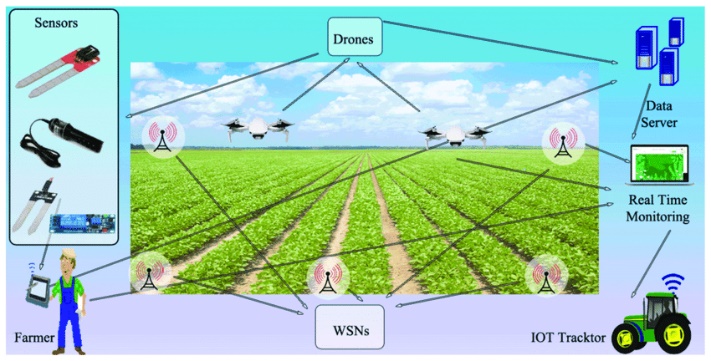
Fig. 2. Remote Sensing and IoT in Soil Data Collection
D. Data Fusion and Integration Approaches
Data fusion techniques are crucial for unifying diverse datasets—such as those from soil sensors, remote sensing imagery, and climate archives—into a comprehensive framework for assessing soil health. By merging different types of soil data, data fusion enhances both the precision and reliability of AI models in predicting soil characteristics and health metrics. For instance, soil data on pH, moisture levels, organic matter, and temperature gathered by IoT sensors can be integrated with satellite-derived spectral images, providing a more complete picture of surface and subsurface conditions. One common technique, feature-level fusion, merges data from various sources during feature extraction, generating enriched input vectors that improve model accuracy in detecting soil variability. Decision-level fusion, on the other hand, combines outputs from multiple AI models or data sources, creating a single cohesive result that maximizes the strengths of each dataset. Techniques like Principal Component Analysis (PCA) help manage data complexity by reducing dimensionality without sacrificing critical information. By integrating these varied soil and environmental data sources, data fusion facilitates a comprehensive understanding of soil health, empowering robust and scalable predictive models capable of addressing the intricate and evolving nature of soil ecosystems across different regions and seasonal cycles.
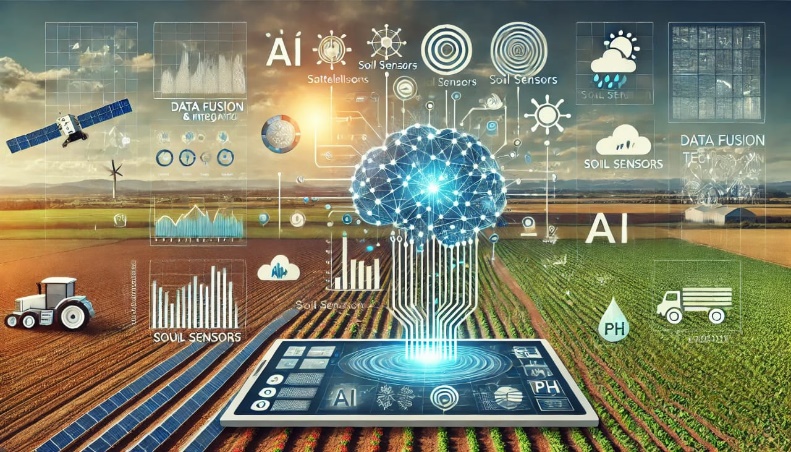
Fig. 3. Data Fusionand Integration Approaches
III. METHODOLOGY
A. Data Collection Techniques
Effective soil health monitoring relies on a comprehensive data collection strategy that integrates various sources of information to provide a complete view of soil conditions. This methodology section outlines the primary data collection techniques used in soil health assessment and predictive modeling.
1) Satellite Remote Sensing
Satellite-based remote sensing is instrumental in collecting large-scale data through multispectral and hyperspectral imaging. Multispectral images capture a wide range of wavelengths, allowing for the analysis of soil properties like texture and mineral composition. Hyperspectral imaging goes a step further by capturing hundreds of wavelengths, enabling detailed distinctions between soil types and the detection of minor variations in soil composition. These satellite images provide valuable spatial data that aid in assessing soil conditions over broad areas, offering an efficient alternative to localized sampling. Remote sensing is particularly useful for mapping soil attributes across large fields and observing changes over time.
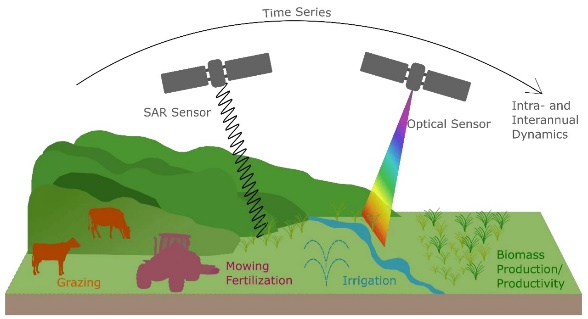
Fig. 4. Satellite Remote Sensing
2) Soil Sensors and IoT Devices
IoT-enabled soil sensors are crucial for collecting continuous, real-time data on key soil parameters such as moisture content, pH, and temperature. These sensors, placed at varying depths within the soil, deliver frequent and precise measurements, capturing fluctuations due to environmental changes or agricultural activities. Real-time sensor data enables prompt interventions for soil management and supports temporal analyses that reveal seasonal soil dynamics. The use of IoT in soil health monitoring provides a scalable solution for tracking soil conditions on an ongoing basis, improving the accuracy of predictive models by providing current and historical data.
3) Historical Agricultural Data
Historical data related to climate patterns, crop yield, soil management practices, and land use history is essential for building predictive models. This data helps to establish relationships between soil health and environmental factors, enabling the model to account for seasonal and climate-induced variability. By integrating historical climate data (such as rainfall, temperature, and humidity) and past agricultural yields, the model can better predict future soil health conditions, helping farmers make proactive decisions in soil and crop management.
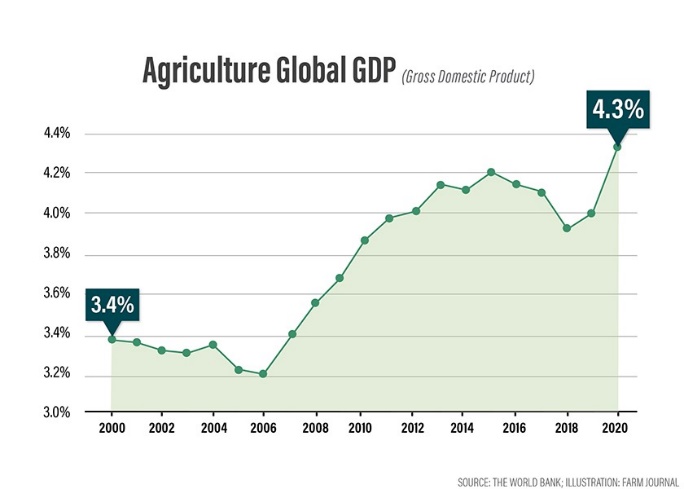
Fig. 5. Agriculture Global GDP
B. Data Preprocessing and Feature Engineering
To ensure that data from multiple sources is consistent and usable in model training, a thorough preprocessing and feature engineering process is necessary. This stage focuses on cleaning, transforming, and refining data to maximize model performance and accuracy.
1) Data Cleaning
Initial data preprocessing involves addressing missing values, outliers, and inconsistencies across the dataset. Missing data can be managed through various imputation techniques, such as mean or median substitution, while outliers may be handled by capping or removal based on established thresholds. Data from different sources (e.g., satellite images, sensor readings, historical records) may have inconsistencies that need to be standardized. Standardizing data ensures consistency across various inputs and prepares it for the next stages of analysis.
2) Feature Engineering
Feature engineering is the process of selecting and transforming relevant variables to enhance the predictive power of the model. This includes extracting meaningful features from raw data, such as average moisture levels, temperature variance, and soil pH trends, to provide insights into soil conditions. Temporal data can be aggregated to represent meaningful trends over time, such as seasonal or monthly averages. Feature scaling and normalization techniques are applied to ensure all data points fall within comparable ranges, which is essential for improving model training and convergence.
3) Dimensionality Reduction
High-dimensional datasets can be challenging for machine learning models, often resulting in overfitting and increased computational costs. Dimensionality reduction techniques like Principal Component Analysis (PCA) are employed to reduce dataset complexity by identifying and retaining only the most critical variables, or components. By preserving the most significant features, PCA maintains the dataset’s predictive value while reducing noise, making the model more efficient without sacrificing accuracy.
C. Model Selection and Development
This section discusses the models selected for soil health prediction, focusing on machine learning and deep learning techniques that can handle diverse data types and complex relationships within the soil ecosystem.
1) Machine Learning Models
Machine learning models are suitable for predicting continuous variables and handling relatively structured data, making them well-suited for soil nutrient level predictions. Regression models, such as linear and polynomial regression, are used to predict continuous soil properties (e.g., nutrient concentrations, pH levels) based on environmental and historical data. Random forest models, a type of ensemble learning, improve predictive accuracy by combining multiple decision trees to average predictions, effectively capturing non-linear relationships. Support Vector Machines (SVM) are applied to classify soil types and predict soil health categories, offering high accuracy, especially when working with limited or complex datasets.
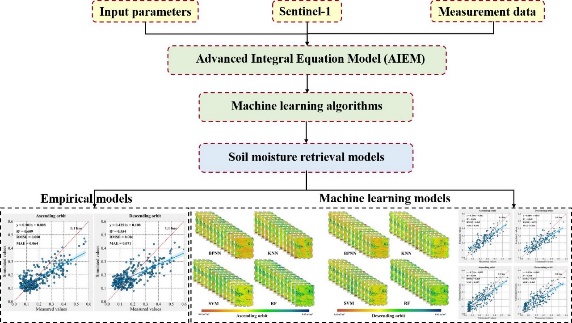
Fig. 6.Machine Learning Models
2) Deep Learning Models
Deep learning models are particularly effective for unstructured data like satellite images and time-series data from IoT sensors. Convolutional Neural Networks (CNNs) excel at image processing tasks, making them ideal for interpreting multispectral and hyperspectral satellite imagery to identify soil characteristics, such as texture, organic matter, and mineral content. By learning spatial patterns within the imagery, CNNs enable high-precision soil condition assessments. Recurrent Neural Networks (RNNs), particularly Long Short-Term Memory (LSTM) networks, are used for analyzing temporal data from soil sensors.
LSTMs can capture time-dependent trends and seasonal patterns in soil health, providing insights into dynamic soil properties that fluctuate over time.
3) Hybrid Models
Combining machine learning and deep learning approaches in a hybrid model structure enhances model robustness and prediction accuracy. Hybrid models leverage the strengths of both techniques—machine learning algorithms are effective for structured, tabular data, while deep learning models are optimal for handling unstructured image and temporal data. For example, a hybrid model could use a random forest to process tabular data on soil parameters while employing a CNN to analyze satellite imagery, with a final ensemble approach to aggregate predictions. This combination allows for a comprehensive and integrated assessment of soil health, leveraging the diverse data sources available.
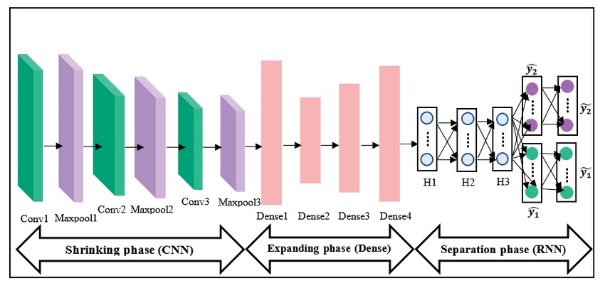
Fig. 7. Hybrid Models
IV. EXPERIMENTAL SETUP AND RESULTS
A. Data Sources and Experimental Framework
The study gathered data from a selected agricultural area using field-based IoT sensors and satellite imagery, creating a diverse dataset to monitor soil health. Key data types included multispectral and hyperspectral satellite imagery, which captured various soil characteristics, IoT sensor data for soil parameters such as moisture, pH, and temperature, and regional climate and crop history records. This combination of data sources provided an in-depth view of soil conditions over time and across different areas.
For data management and preprocessing, Python and R were the primary tools, with libraries such as Pandas, NumPy, and Scikit-learn (Sklearn) handling data cleaning and feature engineering tasks. Machine learning (ML) and deep learning (DL) models were developed using TensorFlow, PyTorch, and Sklearn, each framework chosen based on its strengths for particular model types. TensorFlow and PyTorch were used for DL tasks, especially CNNs and LSTMs, due to their GPU compatibility and customizability. For simpler ML models like regression and random forests, Sklearn offered essential utilities for baseline model testing.
The experimental setup aimed to evaluate and compare model performance for predicting soil health indicators across different soil parameters and geographical regions. The framework also included cross-validation methods, enabling a thorough comparison of models and data processing techniques.
B. Model Training and Evaluation Metrics
Various strategies and metrics were applied during model training to optimize model performance and ensure reliable predictions.
1) Training Strategy
Cross-validation was used to assess model performance and mitigate overfitting, specifically through k-fold cross-validation. Here, the data was divided into k subsets, with each subset acting as a test set in turn while the others were used for training. This rotation across subsets enabled an in-depth evaluation of model accuracy and reliability. Hyperparameter tuning methods, such as grid search and random search, were applied to optimize each model. Adjustments to parameters, such as learning rates, tree depths for random forests, and architectural details for DL models, aimed to improve accuracy and reduce error rates
2) Evaluation Metrics
Different metrics were selected based on the prediction type—either continuous or classification. For continuous variables related to soil health, metrics such as Root Mean Squared Error (RMSE), Mean Absolute Error (MAE), and R² Score were used. RMSE and MAE provided insights into the prediction error, with RMSE more sensitive to larger errors, while MAE offered an overall error assessment. R² Score measured the variance explained by the model, indicating its fit.
For classification tasks like soil type categorization, F1 Score and Accuracy were key metrics. Accuracy measured the percentage of correct predictions, while the F1 Score, which combines precision and recall, was useful in cases of class imbalance. These metrics collectively provided a clear view of each model’s strengths and weaknesses, supporting comprehensive performance comparison.
C. Results and Analysis
The evaluation of models provided insights into the effectiveness of AI-based soil health monitoring.
1) Model Performance Comparison
Regression models and random forests showed strong performance for continuous soil parameters, such as nutrient levels and moisture, with random forests excelling in capturing non-linear relationships. CNNs were effective in analyzing multispectral imagery, accurately predicting aspects like soil texture and organic matter distribution. LSTMs, trained on time-series data from IoT sensors, excelled in tracking seasonal soil health trends, making them useful for long-term soil condition forecasting.
The hybrid model approach, combining ML for tabular data with DL for image and temporal data, yielded the best overall results. This combination effectively handled diverse data inputs and improved accuracy across both continuous and classification tasks.
2) Accuracy Analysis and Practical Implications
The highest accuracy was observed in models predicting soil moisture and pH levels, with random forests and CNNs showing strong alignment with actual values. For soil type classification, the F1 Score reflected consistent performance across categories, while Accuracy confirmed the model’s reliability. These findings indicate that AI-based approaches are feasible and effective for real-world soil health monitoring applications.
3) Error Rates and Model Limitations
Despite satisfactory overall performance, some limitations were noted, particularly regarding data quality and environmental variability. Inaccuracies in IoT sensor readings, due to sensor malfunctions or environmental noise, introduced some errors in predictions. Additionally, variations in climate patterns impacted the accuracy of models, especially for time-series data. The frequency of data collection also posed challenges, necessitating frequent standardization and synchronization to maintain consistency.
V. DISCUSSION
A. Advantages of AI in Soil Health Monitoring
AI technologies offer several significant advantages in monitoring soil health, revolutionizing agricultural practices and contributing to sustainable farming methods.
1) Scalability
AI models can analyze vast datasets from various sources, including satellite imagery, IoT sensors, and historical data. This scalability allows for comprehensive monitoring across large geographical areas, making it feasible to assess soil health at both local and regional levels. Farmers and agricultural organizations can leverage AI to evaluate multiple fields simultaneously, enhancing efficiency and facilitating informed decision-making.
2) Real-Time Insights
The integration of IoT devices provides continuous, real-time monitoring of soil parameters such as moisture, pH, and temperature. This immediacy enables farmers to react quickly to changing soil conditions, optimizing irrigation schedules and fertilizer application. Real-time data collection and analysis can lead to more dynamic farming practices, improving crop yield and quality while minimizing resource waste.
3) Cost-Efficiency
By utilizing AI for soil health monitoring, farmers can reduce reliance on traditional methods, which often involve costly laboratory testing and manual sampling. AI's ability to predict soil conditions and optimize resource use translates to cost savings over time. Moreover, proactive soil management informed by AI predictions can prevent issues that may require expensive interventions later.
4) Potential for Preventive Actions
AI predictions can facilitate preventive measures, allowing farmers to address soil health issues before they escalate. For instance, identifying nutrient deficiencies or potential erosion risks through predictive modeling enables timely interventions, enhancing soil health and crop resilience. This proactive approach not only protects agricultural productivity but also contributes to environmental sustainability by reducing over-application of fertilizers and pesticides.
B. Challenges and Limitations
Despite the advantages, several challenges and limitations must be addressed to fully harness AI's potential in soil health monitoring.
1) Data Heterogeneity
The integration of diverse data types—such as satellite imagery, sensor data, and historical agricultural records—poses challenges related to data compatibility and standardization. Variations in data formats, collection methods, and temporal resolution can complicate analyses and affect model performance. Ensuring uniformity across datasets is crucial for accurate predictions.
2) Model Interpretability
Many advanced AI models, particularly deep learning approaches, operate as "black boxes," making it difficult for users to understand how predictions are generated. This lack of transparency can hinder trust among farmers and stakeholders who rely on these models for decision-making. Enhancing model interpretability is essential to ensure that users can comprehend and validate AI-generated insights.
3) High Computational Requirements
Training and deploying AI models, especially those involving large datasets and complex architectures, can demand significant computational resources. This requirement may limit accessibility for smaller farms or organizations with fewer technological capabilities. Reducing the computational burden while maintaining model accuracy is a critical area for future research.
4) Need for Region-Specific Customization
Soil characteristics and agricultural practices can vary widely across different regions. AI models trained on data from one area may not perform well in another without proper adaptation. Customizing models to account for local soil types, climate conditions, and agricultural practices is necessary to enhance their applicability and effectiveness.
C. Unborn Directions
To advance the use of AI in soil health monitoring, several unborn research directions can be pursued:
1) Integration of Real-Time Sensor Data with Predictive Models
Unborn work should concentrate on creating fabrics that seamlessly integrate real-time detector data with predictive AI models. This integration could enhance model responsiveness and rigidity, allowing for more dynamic monitoring and timely interventions grounded on current soil conditions. Developing platforms that grease real-time data processing and analysis will be crucial.
2) Exploration on Model Interpretability
Further exploration is demanded to develop ways that enhance the interpretability of AI models in agricultural contexts. Efforts should concentrate on rephrasing complex model outputs into actionable insights that farmers can easily understand and use. By furnishing explanations for model predictions, stakeholders can make further informed opinions grounded on AI-generated recommendations.
3) Collaboration with Farmers and Stakeholders
Engaging growers, agronomists, and agricultural organizations in the development and validation of AI models will insure that the results handed are practical and relevant. Collaborative efforts can help tailor models to meet the specific needs of diverse agricultural settings, promoting broader adoption and effective implementation.
4) Exploration of Multi-Modal Data Fusion
Unborn exploration can explore advanced data fusion techniques that combine various types of data—such as soil sensor readings, satellite imagery, and environmental data to produce further comprehensive soil health assessments. Multi-modal approaches can enhance the accuracy and robustness of predictions, leading to better-informed agricultural practices.
Conclusion
In conclusion, the integration of artificial intelligence (AI) in soil health monitoring presents a significant advancement in agricultural practices, offering the potential to enhance productivity and sustainability. This study has stressed several key findings regarding the effectiveness of AI-driven approaches in assessing soil health. The scalability of AI technologies allows for the analysis of large datasets from various sources, enabling comprehensive assessments across expansive agricultural regions. Additionally, real-time perceptivity deduced from IoT bias and remote seeing technologies grease immediate responses to changing soil conditions, optimizing resource application and precluding potential issues before they escalate. However, the application of AI in soil health monitoring is not without its limitations. Challenges such as data heterogeneity, model interpretability, high computational requirements, and the need for region-specific customization can hamper the effectiveness of AI models. Addressing these challenges is essential for icing that the predictions generated by these models are reliable, actionable, and acclimatized to the unique characteristics of different agricultural settings. The potential of AI-driven approaches to transfigure soil health monitoring cannot be exaggerated. By enabling more precise and informed decision-making, these technologies contribute not only to bettered agricultural productivity but also to environmental sustainability. The proactive management of soil health through AI can lead to better crop yields, reduced reliance on chemical inputs, and enhanced resilience against climate variability. To further upgrade AI models and expand the practical applications of soil health monitoring tools, interdisciplinary research is essential. Collaboration among data scientists, agronomists, environmental scientists, and farmers will foster the development of more robust and interpretable models. By combining expertise from various fields, the agricultural sector can harness the full potential of AI to achieve sustainable farming practices and insure food security in an ever-changing world.
References
[1] Adamchuk, V. I., & Hossain, A. (2020). Machine learning in soil science: A review. Soil Science Society of America Journal, 84(3), 561-578. [2] Alonzo, M., & Giri, D. (2019). Remote sensing for soil health monitoring: Emerging technologies and applications. International Journal of Applied Earth Observation and Geoinformation, 78, 197-205. [3] Breiman, L. (2001). Random forests. Machine Learning, 45(1), 5-32. [4] Chen, J., & Zhang, J. (2021). Deep learning for soil moisture estimation using remote sensing data: A case study. Remote Sensing, 13(15), 2928. [5] Dandois, J. P., & Ellis, E. C. (2010). Remote sensing for the assessment of soil health: A review. Precision Agriculture, 11(4), 393-416. [6] Hengl, T., & Rossiter, D. G. (2013). Soil nutrient mapping using machine learning and remote sensing: A case study from Europe. Geoderma, 197, 29-38. [7] Hu, Y., & Hu, Y. (2021). Internet of Things (IoT) for smart agriculture: A comprehensive review. Journal of Agricultural and Food Information, 22(3), 227-247. [8] Khosla, R., & Westfall, D. (2020). Precision agriculture for soil health monitoring: Opportunities and challenges. Soil Health and Climate Change, 12(1), 45-63. [9] Liu, Y., & Wang, H. (2022). AI and machine learning in soil science: Applications and future directions. Journal of Soil Science and Plant Nutrition, 22(1), 15-34. [10] Zhao, Y., & Zhang, G. (2018). The application of AI in precision agriculture: A review. Computers and Electronics in Agriculture, 153, 135-150.
Copyright
Copyright © 2024 Sunit Jana, Deepshikha Chatterjee, Nikita Pal, Koushik Pal, Kaushik Roy, Surajit Bashak. This is an open access article distributed under the Creative Commons Attribution License, which permits unrestricted use, distribution, and reproduction in any medium, provided the original work is properly cited.

Download Paper
Paper Id : IJRASET64871
Publish Date : 2024-10-28
ISSN : 2321-9653
Publisher Name : IJRASET
DOI Link : Click Here
 Submit Paper Online
Submit Paper Online

